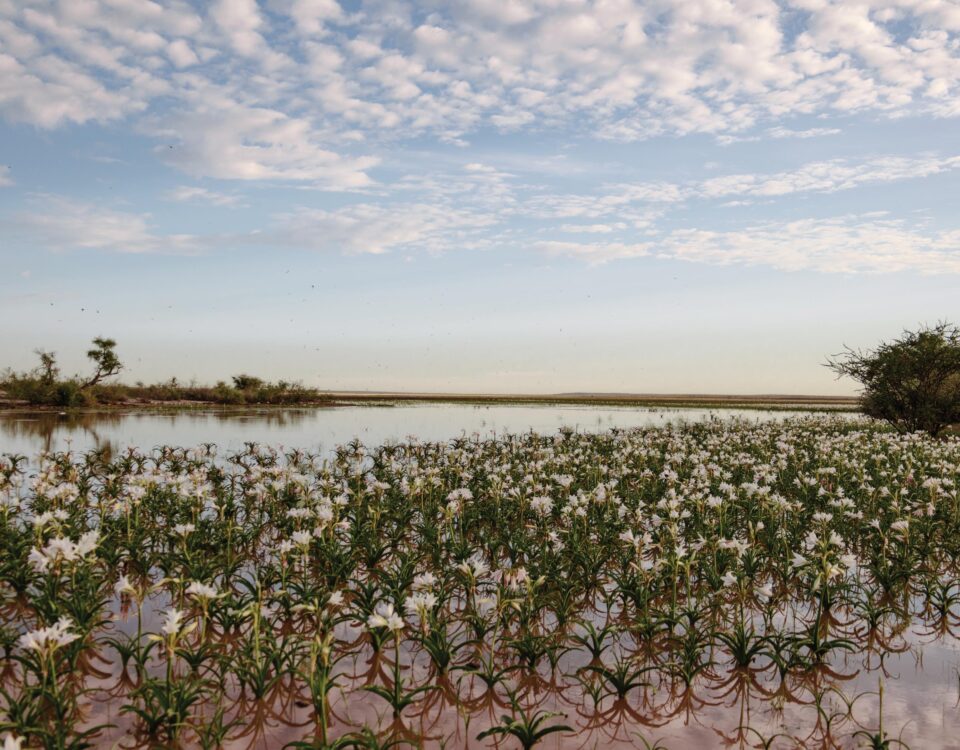Bird’s-eye view – African skimmer
November 12, 2012Camping in Namibia – Omandumba
November 13, 2012Nature Notes
by Amy Schoeman
 The weird, fantastically shaped commiphoras of Namibia’s arid and semi-arid regions are an important component of Namibian flora. Represented by 25 species, including eight endemics, they come in many shapes and sizes, sometimes as many-stemmed shrubs, or shrubs with the trunk branching repeatedly above soil level, and sometimes as trees with a single stem of variable height.
The weird, fantastically shaped commiphoras of Namibia’s arid and semi-arid regions are an important component of Namibian flora. Represented by 25 species, including eight endemics, they come in many shapes and sizes, sometimes as many-stemmed shrubs, or shrubs with the trunk branching repeatedly above soil level, and sometimes as trees with a single stem of variable height.
They produce aromatic resins, they have medicinal qualities and they are magnificent to photograph, especially when the rising or setting sun glows through their peeling, papery bark.
Most species grow on the stony mountainsides and rocky outcrops of the western escarpment, their shallow root systems clinging to the rocks. Only in exceptional cases do they grow on plains in mopane veld. Although found from the Kunene River all the way down to the Orange River and as far east as Grootfontein, Tsumeb and Otavi, the majority, including the endemic species, occur in Damaraland and Kaokoland.
In some species the bark peels or flakes in papery strips, one of the commiphora’s distinctive and attractive features. In others it is smooth or pitted and doesn’t peel. The wood is light, porous and sponge-like and sprouts easily, as farmers have found when using commiphora branches as fence posts. The leaves tend to be smallish, and the fruit thinly fleshed and often brightly coloured.
Namibia’s endemic species are the large-leaved commiphora, Commiphora anacardiifolia, found between Twyfelfontein and Sanitatas in Kaokoland; the small-leaved commiphora, C. dinteri, from the Karibib area southwards to the Zaris Mountains near Maltahöhe; the Kaoko commiphora, C. discolor, that occurs only in Kaokoland; the blue-leaved corkwood, C. glaucescens, that grows from the coast as far east as Grootfontein and from Maltahöhe in the south to the Angolan border in the north; the thread-leaved commiphora, C. kraeuseliana, found in the vicinity of the Brandberg and north-western Kaokoland; the rock commiphora, C. saxicola, especially associated with the coastal regions and distinguished by its short and stunted growth; the twiggy commiphora. C. virgata, and the oak-leaved commiphora, C. wildii.
Commiphoras are ideal for urban gardens and parks, as they are easy to propagate (they can be grown from cuttings), need very little water and are used to droughts. They are especially suitable for growing as bonsai trees.
Most commiphora species produce aromatic resins. In biblical times the fragrant resinous substance myrrh, used in medicine and as incense, and the medicinal resin Balm of Gilead, were extracted from Arabian commiphoras. The commiphora’s medicinal qualities are currently being studied. A group of researchers from the National Chemical Research Laboratory (CSIR), working on natural remedies against cancer, found that the extracts from some species show great potential as anticancer agents.
This article appeared in the Oct/Nov ‘05 edition of Travel News Namibia.

